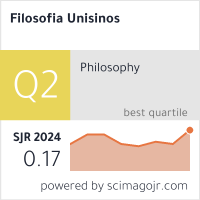Intentionality and Background: Searle and Dreyfus against Classical AI Theory
DOI:
https://doi.org/10.4013/fsu.2013.141.02Abstract
According to the theory of artificial intelligence (AI), the human mind is a formal system made of symbols that operate following a set of instructions, which allow the manipulation of symbols according to their physical form. Against the conception that mental states and processes can be defined only from a syntactic perspective, John Searle used the Chinese Room thought experiment by which he intended to demonstrate that the human mind is more than a formal structure, having a semantic content as well. The semantic content of the human mind is given by intentionality, a feature that belongs exclusively to biological organisms. Starting from here, Searle shows that the logical structure of intentionality and the conditions for functioning of the intentional states cannot be explained by the computational approach of the human mind. Another perspective, which invalidated the AI theory, belongs to Hubert Dreyfus who considers that an adequate understanding of the human mind needs to start from the understanding of the phenomenological structures by means of which we relate to the world. Therefore, cognition and intentionality are explained from the perspective of an embodied being that, due to his body skills, is ontologically and dynamically coupled to the world. In this case, it is not the biological dimension of the human body that matters, but the phenomenological one that does not treat intentionality as knowingthat, whose role is to grasp the world’s objective features, but as a way of constituting the world of the subject according to his concerns and interests.
Key words: AI theory, intentionality, logical analysis, phenomenology, background, context.
Downloads
Downloads
Published
How to Cite
Issue
Section
License
I grant the Filosofia Unisinos – Unisinos Journal of Philosophy the first publication of my article, licensed under Creative Commons Attribution license 4.0 (which allows sharing of work, recognition of authorship and initial publication in this journal).
I confirm that my article is not being submitted to another publication and has not been published in its entirely on another journal. I take full responsibility for its originality and I will also claim responsibility for charges from claims by third parties concerning the authorship of the article.










